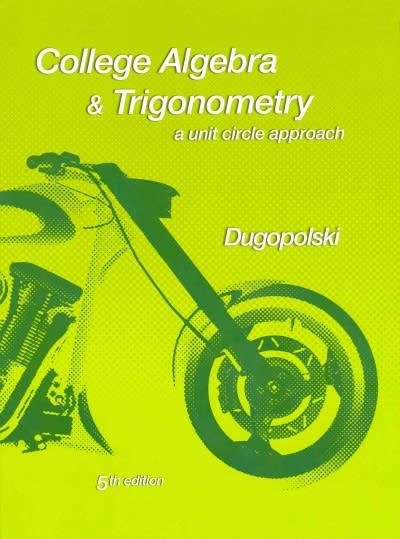Question
1.An urn contains 4 red and 3 blue balls. A ball is drawn at random and the color is observed. The ball is returned along
1.An urn contains 4 red and 3 blue balls. A ball is drawn at random and the color is observed.
The ball is returned along with 5 additional balls of the same color as the one observed. Is removed randomly a second ball is observed and returned to the urn along with 5 additional balls the same color. This process is repeated four times. Find the probability that:
a)the first three balls are blue and the fourth red
b) The last three balls are red.
2.Every time a customer buys a toothpaste, he chooses brand A or brand B. In
each purchase after the first, the probability that he chooses the same brand as the one he bought before is 1/3and the probability that he changes is 2/3. If it is equally likely that in first purchase select brand A or brand B. Find the probability that in four purchases:
a) The first and second purchases are from brand A and the third and fourth purchases are brand B.
b) The first and fourth purchases are of the same brand.
3.An urn contains two blue cards and four red cards. Two cards are drawn randomly one by one without replacement.
a) If it is known that a red card has been drawn, calculate the probability that both cards be red.
b) If there is a particular red card known to have been drawn, calculate the probability that both cards are red.
4.Show that P (A | B) + P (Ac | B) = 1 whenever P (B)> 0.
Step by Step Solution
There are 3 Steps involved in it
Step: 1

Get Instant Access to Expert-Tailored Solutions
See step-by-step solutions with expert insights and AI powered tools for academic success
Step: 2

Step: 3

Ace Your Homework with AI
Get the answers you need in no time with our AI-driven, step-by-step assistance
Get Started


